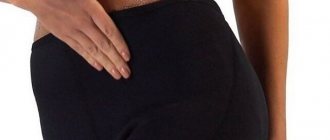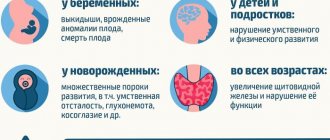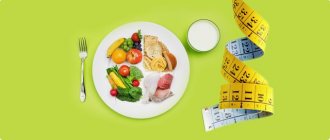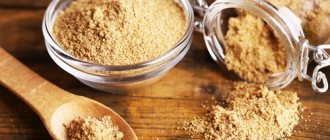In our time of predominance of a sedentary lifestyle and the availability of energy-rich foods, we have to fight for our figure. The weapons of such struggle are universal and yet diverse. These are diets, the principle of which is always the same - you can eat some foods and not all others. Among this variety of options, there is one diet that may seem like an exception to the rule. Fans of the diet under the original name “Zone” will not have to starve themselves and eat only vegetarian food. However, this is still a diet for weight loss.
Methods for losing weight and their variety
It is simply impossible to list all the diets here. However, you should focus on options like “Zone”. These include:
- Indian - based on a combination of rice, eggs, fruits, vegetables, dairy products;
- honey - a lot of honey in combination with meat products, fish, cereals, vegetables and fruits;
- Chinese - a combination of lean meat with eggs, vegetables and fruits;
- cucumber - the predominance of cucumbers in the menu in combination with bread, vegetable oil, eggs, and lean meat.
All these options are similar in one thing - they allow the presence of fats of animal and vegetable origin.
Peculiarities
Diet "Zone" - what is it? The technique under such an unusual name was invented by Dr. B. Sears . Initially, this method of losing weight was described in a book with a long title of 20 words. If you shorten it, leaving the essence, you get: “The Zone: the dietary road to permanent weight loss...”. People liked this book, but the diet described in it was shortened and began to be called simply “the zone.” The result is a somewhat ominous and ambiguous name, which fortunately has nothing to do with food in places of detention.
The specificity of the diet lies not only in the special menu. The “Zone” diet is actually aimed at preventing diabetes and improving the condition of an already ill person.
The Sears diet is based on the principle of a balance of “good” and “bad” eicosanoids. These are derivatives of polyunsaturated fatty acids that are formed during the oxidation process. They appear in the body if a person consumes fish oil, vegetable oils and other foods that contain omega-3 fatty acids.
Eicosanoids take part in the growth of muscle tissue, the formation of nerve irritations, the development of immunity, and the elimination of toxins and pathogens. Their presence has a particularly beneficial effect on the condition of the heart, blood vessels and immune system. Some eicosanoids function as hormones.
The division of eicosanoids into “good” and “bad” is associated with their effect on the amount of insulin produced. When its concentration increases, a person is prone to accumulating excess fat.
Mechanism of action
Barry Sears' Zone Diet is not just about dividing foods into proteins, fats and carbohydrates. This is a consideration of nutrition from the perspective of the body’s hormonal response to the consumption of a particular product.
By launching a chain of hormonal reactions after eating, you can determine how much fat has been deposited.
According to Barry Sears, controlling your hormonal responses will put you on the path to successful fat loss.
Chain of hormonal reactions
By controlling hormonal responses to the food you eat, you can improve the health of your entire body. This is exactly the essence of the zone diet.
The mechanism of action of the developed diet is as follows: all food that enters the human body causes a chain of hormonal reactions. Accordingly, hormones and eicosanoids are released. They all have different effects on the body, fat burning and overall health.
Balancing the body's reactions
There are two groups of superhormones: bad and good (conditional division). Consider this example:
It is the “bad” eicosanoids that provoke the platelet clotting reaction, and the “good” ones that prevent it. But if a person cuts his finger, it is the “bad” eicosanoids that cause a rapid blood clotting reaction, otherwise the victim will simply bleed to death.
On the other hand, a blood clot formed as a result of an excess of “bad” eicosanoids can trigger a heart attack.
We can conclude that maintaining the correct balance of all hormonal reactions ensures good health and a good immune system.
The zone diet is built on precisely this principle – balancing and managing hormonal reactions.
The essence of the diet
For some time, a person should eat in such a way that every day he consumes 30% proteins and fats, and 40% carbohydrates.
Sears's slogan regarding this diet sounds paradoxical - to avoid getting fat, eat more. However, the concept of “more” does not refer to the amount of food eaten at one time, but to the number of meals.
Numerous studies indicate that the person who gets fat is the one who eats a lot of food at one time. The principle of frequent consumption of small amounts of food is accepted by all nutritionists in the world. A similar principle applies to a fractional diet.
How to calculate the amount of proteins?
In order for a simple diet for quick weight loss to give the desired result, it is important to correctly calculate the daily amount of protein needed by the body. It is due to this that fat will be burned. Calculations are made for each individual, based on the characteristics of the body.
Initially, the percentage of body fat to total body weight is calculated. You can use an online calculator for this.
Afterwards, the level of physical activity is determined in relation to protein needs. To do this you need to use the following table.
The relationship between physical activity and protein needs
| Physical activity level | Protein requirements in grams per pound (1 pound = 453.6 grams) of lean muscle mass |
| Passive lifestyle | 0.5 g protein |
| Low activity (one short walk per day) | 0.6 g protein |
| Moderate physical activity (walk at least 3 times a week for 30 minutes) | 0.7 g protein |
| High physical activity (walks 5 times a week for 1 hour) | 0.8 g protein |
| Very high physical activity (walking at least 5 times a week for 2 hours or more) | 0.9 g protein |
| Heavy training (5 times a week) | 1 g protein |
Carrying out calculations using this table. It is important to consider the following factors:
- Not in all cases the person’s weight is taken for calculations. Index. taken into account when calculating protein requirements is a person’s weight without fat.
- The level of physical activity of a person who is overweight will always be higher than the level of physical activity of a person of normal weight with the same lifestyle. Carrying excess weight is equivalent to light physical activity 24 hours a day.
If you are sedentary and overweight, your protein intake will be approximately 0.6 grams per pound of “net” weight.
Formula for calculating individual protein needs
Formula basis:
Fat-free weight (“clean” weight) x Physical activity equivalent = daily protein requirement
Let's look at the essence of the formula using an example:
The woman's weight is 75 kg. Fat mass percentage 30%. The level of physical activity is moderate.
The daily protein intake is determined using the following formula:
- 1 kilogram = 2.2 pounds, so 75 kg = 165 pounds. Since 165 pounds is not a “clean” weight, we need to determine the “clean” muscle mass.
- 165 lbs x 0.3 (30% body fat) = 49.5 lbs (excess body fat weight).
- 165 lbs – 49.5 lbs = 115.5 lbs (lean muscle mass).
- To determine the daily protein requirement, it remains to multiply the “net” weight by the indicator of physical activity: 115.5 x 0.7 = 80.85 grams (the daily protein requirement of a woman weighing 75 kilograms, 30% fat mass and having moderate physical activity) .
Accordingly, the daily protein requirement in this case will be 81 g. This amount must be distributed evenly - over the entire daily diet. Barry Sears suggests dividing the intake into blocks of 7 grams of protein per pound.
If we take the example described above, then for 81 g of proteins you will get 11 blocks (round up). These blocks are divided into main meals and snacks.
Menu options
Despite the strictness of the conditions of this “The Zone” diet, different food combinations are allowed. Let's take as a basis one example of a diet according to the Sears diet for 7 days.
Consider the menu for the “Zone” diet for every day:
Day 1
- Breakfast: omelet with cheese and egg whites (4 eggs, 1 tsp cheese shavings), ½ cup raisins, a piece of black bread, tea.
- Lunch: 200 g crab meat with mayonnaise, lemon juice and pita bread.
- Afternoon snack: 0.5 cups of sour cream.
- Dinner: beef cutlet with herbs.
- Before bed: 0.5 cups of berries.
The menu for the “Zone” diet on the second day includes:
- Breakfast: a piece of bacon, 0.5 cups of Hercules flakes soaked in water, almonds (1 tbsp.), mineral water or tea.
- Lunch: boiled poultry fillet (200 g), tomato, greens, piece of cheese, 100 g of nuts, 0.5 apple.
- Afternoon snack: broccoli with olive oil.
- Dinner: baked poultry fillet with lemon, spinach, fresh strawberries (100 g).
- Before bed: peach and cottage cheese.
Day 3
- Breakfast: fruits, raisins, nuts, cottage cheese and tea.
- Lunch repeats the lunch dishes of the first day.
- Afternoon snack: cottage cheese with pineapple slices.
- Dinner: baked fish with fresh vegetables.
- Before bed: a slice of ham, nuts, raisins.
Day 4
- Breakfast: a slice of bacon, ¼ cup of yogurt with berries and ground almonds, tea.
- Lunch: baked poultry fillet (175 g), salad of olives, champignons and celery, flavored with lemon juice and sunflower oil, orange for dessert.
- Afternoon snack: 0.5 apples, a piece of cheese.
- Dinner: a piece of baked pork with fresh vegetables.
- Before bed: a glass of weak red wine and 0.5 cups of sour cream.
Day 5
- Breakfast: 2 slices of croutons, berries (0.5 cups), tea.
- Lunch: boiled poultry fillet (175 g), bread, raisins.
- Afternoon snack: a piece of ham, raisins with grated avocado.
- Dinner: cutlet (beef), boiled broccoli, 0.5 apples.
- Before bed: a piece of ham and some berries.
Day 6
- Breakfast: a piece of ham, a tomato, a piece of watermelon, a glass of tea.
- Lunch: sandwich with poultry fillet and crab meat, 0.5 tangerine.
- Afternoon snack: cottage cheese with pineapple pieces and ground almonds.
- Dinner: boiled poultry fillet (200 g) with boiled vegetables and fresh berries (75 g).
- Before bed: a piece of ham and half a glass of berries.
Day 7
- Breakfast: omelet with cheese (see day one), a piece of black bread, 0.5 grapefruit, a glass of tea.
- Lunch: baked chicken breast (150 g) with prunes and sweet peppers.
- Afternoon snack: boiled chicken egg, 0.5 apples and a quarter cup of almonds.
- Dinner: 200 g of fried salmon.
- Before bed: a piece of boiled chicken fillet.
In the seven-day course described, some products can be replaced with analogues. For example, any use of berries is allowed; you can replace apples with citrus fruits. However, bananas should not be introduced as they contain a lot of starch, which affects the balance. You can change the meat ingredients: chicken breast, lean pork, veal.
To create a monthly menu for the “Zone” diet, simply swap the days of the week and use analogue products to diversify your diet.
Attention! Reviews and results of the “Zone” diet speak for themselves!
Foods you shouldn't eat
While no foods are completely off-limits, the Zone Diet recommends limiting foods not included in the anti-inflammatory diet pyramid. Including many high-sugar fruits, soft drinks and processed foods.
Here are a few other foods to avoid while following the Zone Diet:
- Fruits high in sugar: bananas, grapes, mango, pineapple, dried fruits
- Starchy vegetables: potatoes, corn, carrots, peas
- Refined carbohydrates: white bread, pasta, tortillas, bagels, chips
- Processed foods: frozen foods, fast food, cookies, baked goods, pretzels, fried foods
- Sugary drinks: sweet tea, soda, juices, sports drinks
Caffeinated drinks such as coffee and tea should also be limited and replaced with water whenever possible.
Restrictions and contraindications
The “Zone” diet is a complete diet, so there are few contraindications. It is not recommended to resort to such a diet for people who have:
- allergies to essential ingredients;
- underweight and protein starvation;
- diseases of the liver, pancreas and gastrointestinal tract;
- hormonal imbalance.
In the last two cases, people are forced to sit on constant therapeutic diets that do not allow deviations from the rules.
Prohibitions and recommendations
Despite the presence of nutritious and seemingly non-dietary food, the Sears diet does not tolerate deviations from the rules, so the products for the “Zone” diet must be strictly those indicated in the diet. Switching to unacceptable ingredients means changing the balance described above. As a result, instead of losing weight, a person gains even more weight.
You cannot use fat-burning drugs while eating this diet. Any means that stimulate metabolism can greatly affect the result.
Health benefits
The Zone Diet encourages a wide range of healthy foods. It also does not set strict limits on which ingredients should be limited or avoided. For this reason, it may be a good option for dieters looking for flexibility and variety.
It is also very similar to the Mediterranean diet, an eating plan rich in fruits, vegetables, nuts, seeds and whole grains. Research shows that a Mediterranean diet may protect against several chronic diseases. Including heart disease, cancer, diabetes and neurodegenerative disorders such as Alzheimer's disease.
Adopting a similar eating pattern—such as the Zone Diet—can offer a similar set of health benefits. Although more research is needed.
Because the diet supports low-glycemic, minimally processed ingredients, it can also improve nutritional quality. Research shows that following a low glycemic index diet can help control blood sugar levels. As well as increasing the body's ability to effectively use insulin.
What's more, other studies have shown that consuming fewer processed foods may be associated with a lower risk of weight gain.
Many also associate the Zone Diet with CrossFit, a fitness regimen that focuses on high-intensity interval training. Because it is relatively high in protein, the Zone Diet can help support tissue repair and enhance muscle growth to give your workout a boost.
Many also associate the zone diet with CrossFit, a fitness regimen that focuses on high-intensity interval training. Because it is relatively high in protein, the Zone Diet may help support tissue repair. And also increase muscle growth to give your workout a boost.
However, research into the effects of diet on athletic performance has yielded mixed results. Therefore, more research is needed to determine how the Zone Diet may affect exercise.
Effect and results
You should not expect results from this diet the very next day. You will be able to feel the expected result only after completing the entire course. However, the hallmark of the Sears diet is its long-lasting effects.
Attention! Since the balance of carbohydrates, proteins and fats affects the biochemical balance, the positive effects last a long time - several years, or even a lifetime.
However, when a person returns to food excesses and a sedentary lifestyle, it will negatively affect the figure and health. After the diet, you still need to eat five times a day. Only the products can now be different.










